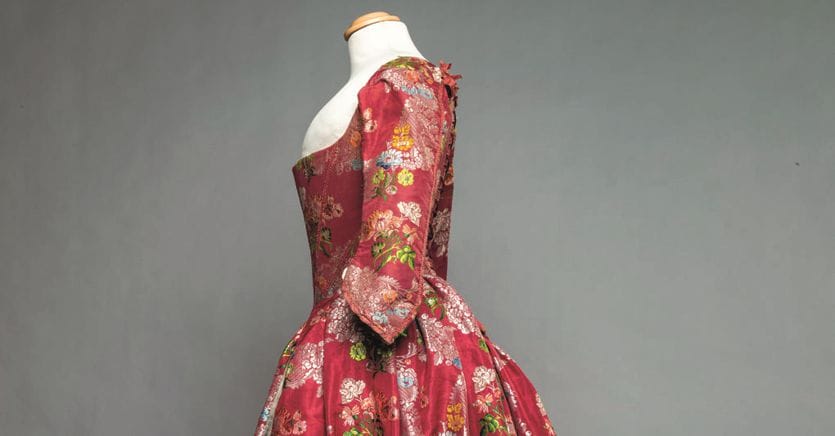The key points
- Three dresses made between 1775 and 1780 by a tailor’s shop in the North East of Italy are exhibited
- Opulent creations, enriched by refined and well-preserved decorations
- In the last part of the exhibition, contemporary tributes to eighteenth-century fashion
They have gone through the centuries (two and a half, to be exact) sheltered in a massive walnut cabinet, coming out of it only one day a year, in summer, to be aired in a shady corner of the garden of the ancient Garda house where they are. remained until last year. And where they had come, by inheritance, from the Nodari family of Castiglione delle Stiviere. Now, those three sumptuous dresses from the Age of Enlightenment, purchased by the AMICHAE Association to be donated to Palazzo Morando | Costume Moda Immagine, have become the generating nucleus of the exhibition curated by Enrica Morini and Margherita Rosina, with Ilaria De Palma, curator of the museum.
Nodari ladies wore them
Displayed in the new museum showcases, which guarantee the conservation of these fragile artifacts, the three dresses tell many stories. First of all that, private, of the two Nodari ladies, of different generations and builds, who had them made reigning Maria Theresa of Austria: of the two, one (slim and young, judging also by the tastes updated to the more sober fashion ” English “) preferred the burgundy color. For her, the brocade silk lampas suit with a meander pattern was made, consisting of three pieces: a skirt designed to emphasize the back (“Point de ventre & beaucoup de cul”, as recited a sartorial manual from 1785), a bodice with a wide neckline, wrung by laces and armed with whalebones, and a jacket, also widely low-necked and with a charming basque, which could be alternated with the first, thus obtaining two different toilets, of more or less tone formal.
To make them with great skill, between 1775 and 1780, was a tailor’s shop in the North East of Italy, as evidenced by the dialectal writings, “manega drita” and “manega cenistra”, which appear on the inside of the sleeves (of different lengths: who knows why) of the bodice. The no less alluring bodice must have come from the same area – this one has come to us without a skirt – which was made with a fine silk with small English-style designs woven by the Marasca factory in Vicenza, as the curators discovered, finding a fragment in an ancient sample of the company kept in the Vicenza Civic Museum of Palazzo Chiericati.
An opulent “robe à la française” (in Italy it was called “andrienne”) of about 1770, made up of a surcoat and a a half skirt made of a bright green silk with an elaborate decoration, to which a large quantity of tiny corolla-shaped trimmings tassels were added, to cover the bodice and part of the sleeves, and to further enrich the skirt. All three dresses exhibit a perfect state of preservation, as if they had never been worn and – a very rare fact for these dresses which, expensive as they were, were often remodeled – are free of any modification, as well as in perfect condition. .
The clothes tell the story of the factories
But these garments, as well as the marvelous and at the time very expensive lace, of the museum collections, exhibited with them because they then necessarily completed (“to appear well in the world”) every toilet, also tell an economic story: that of the factories that produced fabrics, clothes and accessories, enriching the territories in which they were active (France for fabrics and embroideries, Flanders and Burano for their “first-rate” lace, and so on) and making the most successful techniques and decorative motifs circulate in Europe of the luxury industry. While they generated an imaginary of “dreamlike opulence”, which would resurface regularly in the following centuries: like the Marie-Antoinette style, revived in the second half of the 19th century, in clothing and furnishings, from the Empress Eugenia, wife of Napoleon III, or the eighteenth-century costumes for masked balls, the room theatrical films and period films of the decades to come or, again, the revival of the Rococo in décor of bourgeois houses in the 1950s. Until today.
